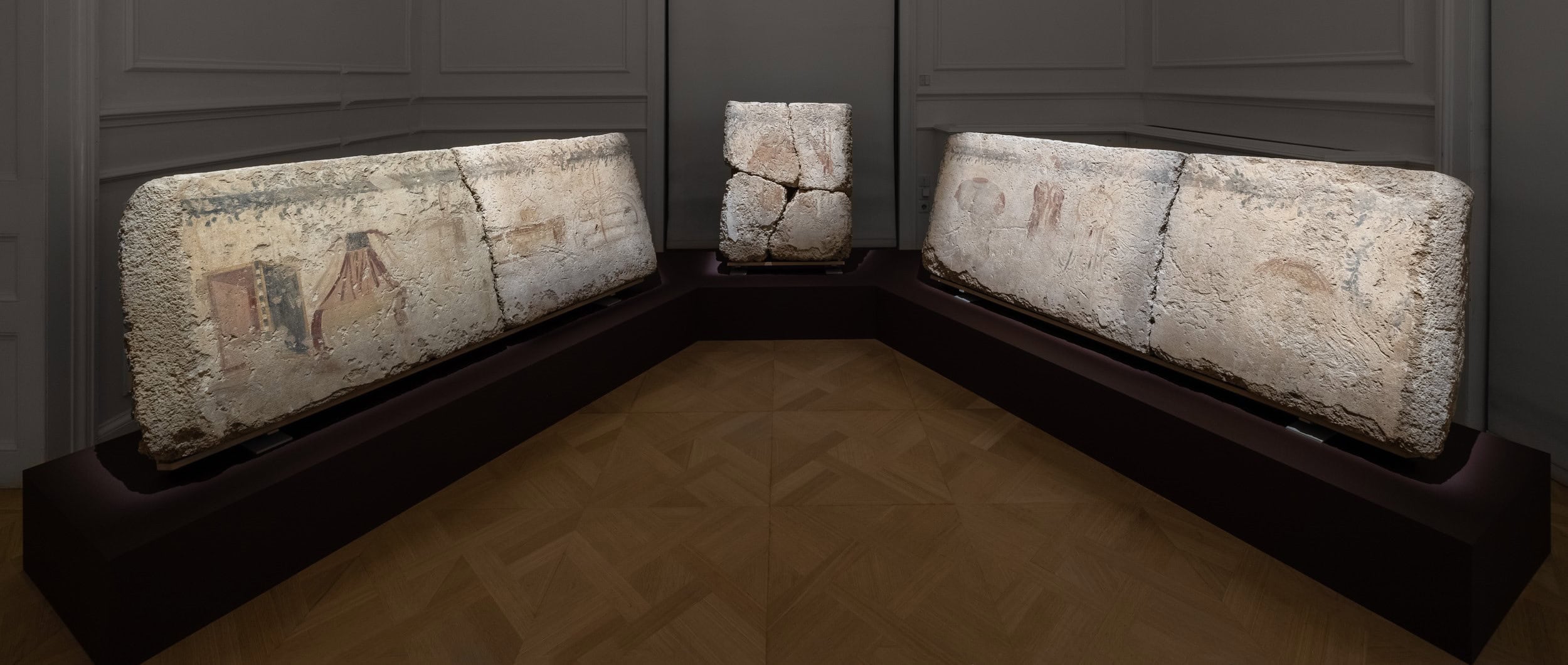Cist-shaped tomb from the necropolis of ancient Tanagra, Boeotia

In the section dominates the cist-shaped tomb from the necropolis of ancient Tanagra, a work of the 3rd century BC.
Made of limestone, its four sides are decorated on their inner surfaces with polychrome paintings that tell the story of the life of the dead.
On the first narrow side [A] of the tomb is represented a horse and a kopis/knife held in a leather sheath, which was the offensive weaponry of its rider, who is identified with the dead.
On one long side [D] is depicted his defensive armour, which follows Macedonian patterns: a cuirass, a pair of greaves for the protection of his legs and a Boeotian-type helmet. In addition to the defensive armour, a metal ring with five strigils (metal tools for cleaning the body) and a floral wreath are depicted. The strigils reveal the deceased’s involvement in athletic activities and his status as a citizen, while the wreath indicates his victorious participation in battles.
The other long side [C] reveals that the deceased was not only a brilliant warrior, but also a man of letters, as it shows his writing materials and the boxes in which he stored the objects of his knowledge: three parchment scrolls rolled up into cylinders all tied together with a red ribbon, a rectangular chest on which is an inkwell with a metal stylus, a rectangular storage box tied with red ribbons ending in a bow, a semi-cylindrical storage cist within a net, from which it was suspended on the wall, and finally a diptych folding board with wax surface for note-taking with a bird-feather quill suitable for writing on parchement.
The second narrow side [B] reveals that the deceased was also a man of the arts, as on it the viewer can see his lyre or kithara with 16 strings, a symbol of his status as a skilled musician.
The iconography of the tomb indicates that the deceased had served in life as an officer of the cavalry, either of the Boeotian or the Macedonian army assigned to defend the city of Tanagra. At the same time, they describe his favourite occupations and skills that inform us of his aristocratic origin.
The painted decoration is another example of the “Macedonization” of ancient Tanagra during the Hellenistic period.
The tomb was presented to the public for the first time during the temporary archaeological exhibition of the Museum of Cycladic Art “Chaeronea 2 August 338 BC: A day that changed the world” in 2023 – 2024 and given on long-term loan by the Ephorate of Antiquities of Boeotia.